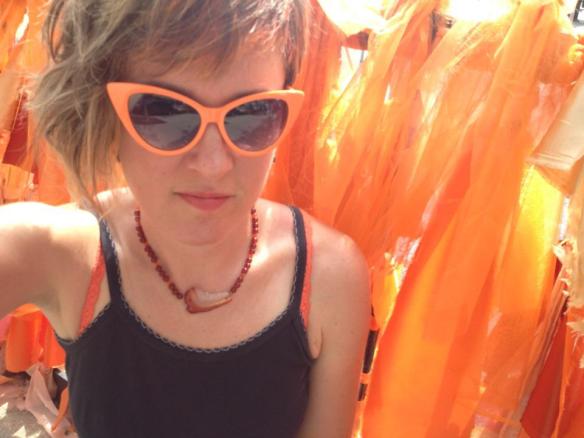In understanding bodies there is often an implicit sense that “the pelvis tells us.” The pelvis tells us when it’s time to pee. The pelvis tells us when we gotta poop. Does the pelvis tell us when we are attracted to someone or an idea? We can tell the pelvis to hold the pee/poop/sex. The menstrual cycle just flows. Many people assume that the pelvis tells us a lot more than it actually might.
Does the pelvis determine identity? Does the pelvis determine gender? Many people assume it does—at least to a large extent. Having a perceived identity that includes the descriptor “female” does have an effect of determining the opportunities one has, or one thinks they have and what others will think is available for them. It also guides how a person might choose to express themselves in life. And some people find that the gender role assigned to them by others, or from the outside doesn’t work for them. Or perhaps those assumptions seem a bit off. It is different for different people.
My body is sexed as female. When I was born people said, “She’s a girl,” and confirmed that “fact” when they changed my diaper or saw me wear girl-appropriate clothing. People seemed to assume that I would eventually marry a man and have “his” children. A power dynamic was assumed for me before I could speak for myself. Many times these assumptions have seemed inappropriate, yet I, myself, also assumed (as soon as I could start assuming) that my life would follow the path laid out by my family/culture.
At some point the outer noise—which I was holding in myself—of what I “should” be doing started to quiet down, and I started to try doing things the way I thought I wanted to. And I tried to survive. The “me” in myself that is real awkwardly tried to emerge into this world. I gave up—with some sadness—the assumptions I had for my life including marriage. I don’t think I need a legal marriage with a male-bodied person to be whole. I am me right now. I’m done with waiting for a me that only exists in a fantasy—this rejects the living person I actually am.
I wrote an article last year called Queering My Sexuality about actively “being a sexual person whose wants and needs are self-defined.” Now I would extend that concept far beyond sexuality.
Queerness, then, is not an identity, but a position or stance. We can use “queer” as a verb instead of a noun. Queer is not someone or something to be treated. Queer is something we can do.
~Kimberly Springer
Queering has to do with taking on one’s identity and stepping away from an inherited lineage of ableism, racism, sexism, homophobia, patriarchy, privilege, money focus, misogyny, ageism, sex-shaming, fat-shaming, objectification, coercion, bullying (…) and consciously being a person—even creating a self through chosen actions and expressions—that better reflects values of the heart with caring awareness of other people in community emphasizing inclusion of people (of a different race, body type, or gender presentation for example) helping to expand the understanding of the person reaching out as well as to reverse the effects of the old ways of domination, control and repression.
Queering has to do with getting my needs met. Now I have the freedom to begin to understand my needs—which I have discovered—are different in some ways from the cultural recipe for success (marriage+money). The recipe for my fulfillment needs to be determined by me, otherwise I am just going through the motions of a life that doesn’t feel like mine. This creates a lot of anxiety.
Queering has to do with rejecting some of the things that are often assumed to be true. If I believed that I cannot exist as a whole person without a husband while also living unmarried, then clearly I am limiting my ability for self expression and happiness, and feeling less than this so called “ideal”.
Queering can have something to do with radical self-expression. I think queering can also be quieter, yet as it is better understood within a person it may also yearn for greater expression, visibility and celebration.
Queer community and books, conversations and art have offered me so much support and hope as I have discovered another sense of myself that is different than the old assumptions I learned.
If you were to ask me about my gender, in the right context (queer) I would tell you that my gender is orange. This color inspires me, as discovering myself and my desires also inspire me. And just the way a color is wide open in that it can appear on so many different things, I also feel that the way I might want to present myself and express myself may also prefer to embrace a range of possibilities.


I think our hearts must be big enough to accept that people must be free to explore different possibilities for themselves, as long as they are not hurting themselves, other persons, or the community. I further think that Queering respects a certain fluidity that is closer to reality than the gender roles acknowledged by this society at this point in history.
This is a beautiful and very insightful post. I love that you are feeling free to express yourself fully, and I think I have far to go in this area.
I also love the fluidity of the term “queering” as a verb.
I love the definitions and conversation you’re exploring here… it is directly insightful towards my own questioning around gender identity and sexuality and the yoga classes I teach where components of the material are geared towards exploring physiologically sex-specific aspects of the body.